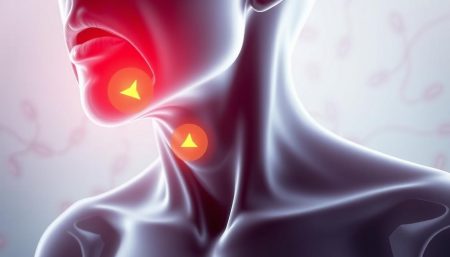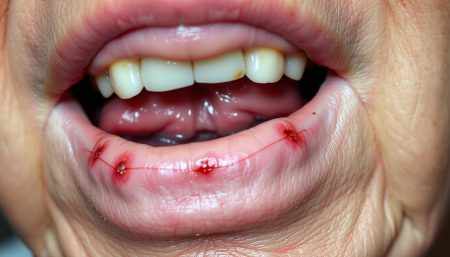The betel nut is more than a seed from the areca palm. It’s a cultural treasure and a common habit worldwide. It’s known for its psychoactive and stimulant effects, deeply rooted in tradition.
But, there’s a darker side to its use. The betel nut health risks and betel nut dangers to human health are real and concerning. This article will explore the side effects of betel nut use. We’ll look at its impact on oral and systemic health, its link to cancer, and the social and psychological challenges it poses.
Understanding Betel Nut and Its Cultural Significance
The betel nut is a key part of tradition in many Asian and Pacific cultures. It symbolizes hospitality and brings people together. Exploring the cultural significance of betel nut and its historical betel nut usage is a journey through time and culture.
What is Betel Nut?
Betel nut comes from the areca palm fruit. People chew it with betel leaf and lime paste. It’s a big part of many communities’ social and ceremonial life.
Chewing betel nut marks special occasions and daily life. It adds a sense of ritual and unity to everyday moments.
Historical Usage of Betel Nut in Various Cultures
The historical betel nut usage goes back thousands of years in Asia. It’s used for social bonding and as medicine. The custom of chewing betel nut shows its deep cultural significance of betel nut.
| Culture | Ritual Significance | Medicinal Uses |
|---|---|---|
| India | Used in marriage ceremonies as a symbol of love and unity | Traditional remedy for bad breath and digestion |
| Papua New Guinea | Major component in welcoming rituals and community gatherings | Employed to relieve hunger and boost energy |
| Taiwan | Integral to business meetings and social interactions | Claimed to enhance alertness and ward off heatstroke |
This table shows how the betel nut is tied to social and medicinal aspects in cultures. Its widespread use shows the lasting impact of ancient traditions in today’s world.
The Composition of Betel Nut and Its Chemical Constituents
Exploring the betel nut chemical constituents shows a mix of natural compounds. These compounds are key to its role in cultural rituals and the worries about betel nut toxicity. Studies have looked into these chemicals to grasp their effects on health.
The main active substance in betel nut is arecoline, a strong stimulant. It affects the brain and nervous system. But arecoline is not the only alkaloid in betel nut. There are also arecaidine, guvacine, and guvacoline, all with their own effects.
| Chemical Constituent | Impact |
|---|---|
| Arecoline | Potent stimulant, increases alertness, can lead to dependency |
| Arecaidine | Metabolite of arecoline, less studied but contributes to psychoactivity |
| Guvacine | Impacts neurotransmitter reuptake, particularily GABA |
| Guvacoline | Similar in structure to guvacine, possibly affects the same pathways |
Beyond the psychoactive parts, betel nut chemical constituents include flavonoids, tannins, and phenolic compounds. These add to its taste and might help fight off free radicals. Yet, these chemicals also highlight the dangers of betel nut toxicity. It’s vital to use betel nut with caution.
Knowing about these compounds sheds light on betel nut’s two sides: its cultural value and health risks. As scientists learn more, it’s critical to teach users and doctors about its pros and cons.
Common Betel Nut Consumption Methods Worldwide
Betel nut is enjoyed in many ways around the world. This shows how important it is in different cultures. Each place has its own way of preparing it, making traditions rich and varied.
Differences in Betel Nut Preparation
Looking at global betel nut preparation is really interesting. Every area has its own twist, based on local tastes and what’s available. In Asia, people often mix betel nut with lime and spices in a leaf. But, each place does it a bit differently.
Associated Cultural Practices
The way people use betel nut consumption methods is linked to social and religious life. It’s not just about eating it. In some places, giving betel nut is a sign of welcome or a serious agreement.
Here’s a look at how betel nut is prepared in different cultures:
| Country | Preparation Method | Occasions |
|---|---|---|
| India | Betel leaf wrapped around sliced nut with spices | Weddings, religious ceremonies |
| Papua New Guinea | Raw nut chewing | Social gatherings, daily leisure |
| Taiwan | Sweetened betel paste | Business meetings, traditional festivals |
Betel Nut Side Effects
The harmful effects of betel nut are significant. Many health complications have been reported. It’s important for users and healthcare professionals to understand these effects.
- Continuous exposure to betel nut can lead to severe dental issues, including tooth decay and gum disease.
- Prolonged use has been linked to metabolic syndromes such as diabetes and obesity due to its impact on insulin sensitivity.
- Respiratory issues, such as asthma and bronchitis, have been noticed in frequent users.
Further exploration into these betel nut hazards shows a broader spectrum of health threats:
- Neurological impairments that could affect cognitive functions over time.
- Digestive problems that can lead to chronic gastrointestinal conditions.
- Increased heart rate and palpitations, which raise the risk of heart-related diseases.
Research and health assessments show that the harmful effects of betel nut affect many bodily systems. This leads to complex health scenarios. These could affect an individual’s lifestyle and life expectancy.
Oral Health Complications From Betel Nut Chewing
Chewing betel nut has been a big part of many cultures. But, it can really hurt your teeth and mouth. The betel nut oral health implications are serious and can lead to health problems that need doctor’s help.
Betel Nut Oral Health Implications
Using betel nut a lot can cause big dental problems. The dangers of chewing betel nut include oral submucous fibrosis and oral cancer. These issues get worse because of the chemicals in the nut that hurt the mouth’s lining.
Signs and Symptoms of Oral Health Degradation
It’s important to know when betel nut is harming your mouth. Look out for signs like ulcers, trouble opening your mouth, a burning feeling, and bad teeth and gums.
| Condition | Symptoms | Treatment Suggestions |
|---|---|---|
| Oral Submucous Fibrosis | Mouth stiffness, ulcers | Discontinuation of betel nut, corticosteroids, physiotherapy |
| Periodontal Disease | Gum erosion, bleeding | Professional dental care, improved oral hygiene |
| Oral Cancer | Swelling, lump formation | Surgical intervention, chemotherapy, radiation |
These conditions show why it’s so important to know about the dangers of chewing betel nut. We need to spread the word about betel nut’s effects on teeth and mouth. Doctors play a big role in helping manage these risks.
Systemic Health Effects Linked to Betel Nut Use
Betel nut use can harm your body in many ways. It’s not just about oral health problems. Studies show it can also affect your stomach and brain, leading to serious health risks.
Gastrointestinal Disturbances
Eating betel nut regularly can cause stomach issues. You might feel pain, discomfort, or have abnormal bowel movements. It can even raise your risk of getting certain cancers in the stomach or intestines.
The chemicals in betel nut can mess with your digestive system. This is why you might experience these problems.
Neurological Implications
Betel nut can also harm your brain and nervous system. Users might feel dizzy, shaky, or confused. Long-term use can lead to serious brain diseases.
These effects show how betel nut can harm your brain and nervous system.
| Systemic Effect | Short-term Symptoms | Long-term Risks |
|---|---|---|
| Gastrointestinal | Stomach pain, abnormal bowel movements | Increased risk of gastrointestinal cancers |
| Neurological | Dizziness, tremors, confusion | Potential for neurodegenerative diseases |
It’s key to know about these health risks. This helps both users and doctors deal with the dangers of betel nut. Studies show we should be careful with betel nut, even though it’s part of some cultures.
The Carcinogenic Risk of Betel Nut: Understanding the Danger
Looking into the link between betel nut and cancer risk shows why we must know about betel nut carcinogenic properties and betel nut dangers to human health. This part talks about the science and data that show the big health risks from using betel nut a lot.
Betel Nut Carcinogenic Properties
Studies have shown that betel nut can cause cancer, mainly in the mouth and throat. The betel nut risks come from a chemical called arecoline. It can change cells in the mouth to become cancerous.
Evidence of Cancer Development in Users
Research shows a strong link between using betel nut often and getting oral cancer. People who use betel nut a lot have more oral cancer than those who don’t. This highlights the serious health dangers of using betel nut.
| Region | % Increase in Oral Cancer | Frequency of Betel Nut Consumption |
|---|---|---|
| South Asia | 250% | Daily |
| East Asia | 180% | Multiple times a week |
| Southeast Asia | 220% | Weekly |
Addiction and Dependency: The Hazard of Betel Nut Usage
Betel nut is widely used around the world. It’s important to know about the risks of addiction and quitting. The dangers of chewing betel nut affect both body and mind, making it hard to stop.
Betel Nut Addiction Dangers
Betel nuts contain strong chemicals like arecoline, making them addictive. They can change how you feel and see things. This can lead to a strong need to keep using them, even when it’s bad for your health.
Challenges Faced in Cessation
Stopping betel nut use is tough. You might feel irritable, anxious, and really want it. These feelings are similar to those when quitting tobacco or caffeine. It shows how serious betel nut addiction dangers are.
Getting over betel nut addiction needs a lot of help. This includes doctors, support groups, and mental health services. It’s a hard journey, but with the right help, it’s possible.
This section talks about the risks of betel nut and how hard it is to stop. We hope to raise awareness and help people manage its use better. This could lead to better health for everyone.
Psychological and Behavioral Impact of Betel Nut
The effects of betel nut on the mind show how it changes brain pathways and behavior. Long-term use changes mood, likely due to its impact on brain chemicals.
Studies suggest betel nut can make users feel more alert and happy at first. But, these feelings can turn into anxiety and irritability over time. It can even lead to addiction and mental health issues, similar to other stimulants.
- Elevated mood and temporary euphoria
- Increased agitation and anxiety over time
- Potential development of addiction-like behaviors
Users often change how they act, as studies show. They might become more aggressive, less inhibited, or act erratically. These changes can harm personal and work relationships.
| Behavior | Typically Observed Changes | Potential Long-Term Effect |
|---|---|---|
| Social Interaction | Decreased Inhibition | Deterioration in Social Relationships |
| Mood Stability | Increased Fluctuations | Risk of Mood Disorders |
| Perception of Well-being | Initial Increase Followed by a Decrease | Potential for Psychological Dependency |
Betel Nut’s Influence on Fetal and Child Development
Looking into how betel nut affects human growth, we find interesting facts. It’s clear that betel nut hazards are a big concern, affecting unborn babies and children’s development.
Risks During Pregnancy
Research shows that betel nut health risks during pregnancy are real. Studies say it can cause developmental delays and other problems. These issues can harm both the mother and the child in the long run.
For more on health issues, check out allergy symptoms that affect pregnant women and their babies.
Long-term Effects on Children
Children exposed to betel nut before birth might face many challenges. Studies link prenatal betel nut exposure to slower thinking and behavior problems later on.
This table shows how children are affected by prenatal betel nut exposure:
| Aspect of Development | Children with Prenatal Exposure | Children without Prenatal Exposure |
|---|---|---|
| Cognitive Development | Lower performance in cognitive tests | Normal or above average |
| Physical Health | Higher incidence of respiratory issues | Lower incidence of health issues |
| Behavioral Outcomes | Increased hyperactivity and attention issues | Typical behavior patterns |
This data highlights the importance of being careful and taking steps to prevent betel nut use during pregnancy. It’s key for the health of the mother and the well-being of the next generation.
Examining Betel Nut Toxicity
The growing concerns about betel nut toxicity have led to many studies. These studies aim to understand the harmful effects of betel nut. This section explores the toxic parts of betel nuts and their health risks.
Research has found harmful chemicals in betel nuts. Arecoline, the main chemical, can harm the brain and stomach. Long-term use of arecoline may cause serious health problems, like cancer and metabolic syndrome.
| Component | Known Effects | Risk Level |
|---|---|---|
| Arecoline | Potentially carcinogenic, psychoactive | High |
| Arecaidine | Gastrointestinal irritant | Medium |
| Guvacine | Endocrine disruptions | Medium |
| Guvacoline | Neuromuscular effects | Low |
It’s important to know about the harmful effects of betel nut for public health. Raising awareness about betel nut toxicity can reduce health risks. We need to find safer ways to use betel nuts and encourage better habits.
Legislation, Regulation, and Public Health Advisory
There are big efforts to control betel nut use because of its health risks. These efforts include betel nut regulation and public health advisory on betel nut. They aim to lessen the harm caused by betel nut through laws and education.
Efforts to Control Betel Nut Distribution
Many places have made laws to stop the sale and use of betel nuts. These laws are to keep people safe, mainly in areas where betel nut is common. Laws include age limits, licenses, and harsh penalties for breaking them.
These rules try to make betel nuts less available and less appealing.
Health Education and Awareness Campaigns
Health education is also key in fighting betel nut use. These efforts teach people about the dangers of betel nuts, like oral cancer and addiction. They work with doctors, schools, and community leaders.
These campaigns aim to raise awareness and push for healthier choices.
| Region | Legislation | Public Campaigns |
|---|---|---|
| Asia-Pacific | Strict sale regulations, warning labels | Extensive school programs, community outreach |
| United States | Import restrictions, FDA advisories | Online awareness platforms, local health department initiatives |
| Europe | EU health directives, trade monitoring | EU-wide public health campaigns, informational pamphlets |
Alternatives and Remedies to Address Betel Nut Side Effects
Understanding remedies for betel nut side effects and alternatives to betel nut is key. Both doctors and traditional healers have solutions. These can help lessen the negative impacts of betel nut chewing.
Doctors often suggest safer options to replace betel nut. These alternatives give a similar boost without the harm. They help users move away from betel nut.
- Nicotine gum or patches: They help with smoking cessation and oral fixation from betel nut.
- Herbal chewable: It has natural ingredients, like betel nuts but without harmful parts.
- Caffeinated beverages: They offer a stimulating effect, a good betel nut substitute.
Traditional remedies also help with betel nut side effects. Many cultures use natural herbs and holistic treatments. These help detoxify and support oral health, common in betel nut cultures.
- Green tea: It has antioxidants that counteract betel nut toxins.
- Turmeric: It reduces inflammation and pain from chewing.
- Aloe Vera: It heals and soothes the mouth.
Looking into alternatives to betel nut and using remedies for betel nut side effects is important. It helps those trying to cut down or deal with side effects. Using both modern and traditional methods gives many options for users, doctors, and counselors.
Global Patterns and Statistics around Betel Nut Usage
betel nut side effects It’s important to understand the patterns and statistics of betel nut usage worldwide. This helps us see how it affects people globally. By looking at global patterns and statistics, we can see how its use has grown and spread.
Geographical Patterns in Consumption
In Asia, betel nut is mainly used, with South and Southeast Asia leading the way. But, how it’s used varies a lot. This depends on culture, society, and economy. In rural areas, where old traditions are kept alive, its use is very common.
Recent Trends and Shifts in Usage
In recent years, how people use betel nut has changed. This is because more people know about its health risks and attitudes are shifting. Younger people in cities are using it less.
| Country | 2010 Usage% | 2020 Usage% |
|---|---|---|
| India | 35% | 28% |
| Bangladesh | 40% | 32% |
| Indonesia | 31% | 22% |
The table shows a drop in betel nut use over the last ten years in some major countries. This decline matches efforts to educate about health and stricter rules.
Advances in Medical Research on Betel Nut Health Risks
Recent medical research on betel nut has made big strides. These studies look into the bioactive compounds in betel nut and their health effects. They found that these compounds are more harmful than thought, leading to various health problems.
One major area of focus is how these compounds cause oral submucous fibrosis and oral cancers. This research is vital for doctors and health officials. It shows the urgent need for better ways to prevent these issues.
betel nut side effects New treatments are being developed to fight the dangers of betel nut. Researchers are testing ways to stop or lessen its cancer-causing effects. They’re also looking into ways to prevent problems before they start, like education programs and new medicines.
This work aims to treat and prevent health issues linked to betel nut. It’s all about early action and teaching people about health. This shows how important it is to act fast and educate everyone.
As we learn more, our goal is clear: to stop the health problems caused by betel nut worldwide. It’s a tough fight, but scientists and doctors are committed. They’re working hard to turn research into real actions that protect people from betel nut dangers.
FAQ
Q: What is Betel Nut and its cultural significance?
A: Betel nut, also known as areca nut, is the seed of the Areca palm. It’s very important in many cultures, mainly in Asia and the Pacific. People chew it as a social tradition, showing hospitality and marking important life events.
Q: What are the chemical constituents of Betel Nut?
A: Betel nut has chemicals like arecoline, which makes it psychoactive. It also has flavonoids, tannins, and polyphenols. These chemicals make it toxic and risky for health.
Q: How is Betel Nut commonly consumed?
A: People chew betel nut in different ways, depending on where they are. It’s often chewed with a betel leaf, lime, tobacco, and spices. It’s also sold as powders, pastes, and in products.
Q: What are the harmful effects of Betel Nut on oral health?
A: Chewing betel nut can cause serious mouth problems. It can lead to oral submucous fibrosis, tooth decay, gum disease, and oral cancers. It can also stain teeth and cause mouth lesions.
Q: Can chewing Betel Nut affect systemic health?
A: Yes, betel nut can harm more than just your mouth. It can cause stomach problems, increase diabetes risk, heart diseases, and even seizures.
Q: What evidence is there to suggest that Betel Nut has carcinogenic properties?
A: Many studies show a strong link between betel nut and cancer. It’s linked to oral and esophageal cancers. The chemicals in betel nut are known carcinogens, raising cancer risk in the mouth and throat.
Q: What are the dangers of Betel Nut addiction and dependency?
A: Betel nut has addictive substances like arecoline. Regular use can lead to physical addiction. Quitting can cause withdrawal symptoms, and long-term use can lead to serious health problems.
Q: How does Betel Nut usage impact psychological and behavioral health?
A: Betel nut can make you feel good at first but can lead to anxiety and aggression. Long-term use can worsen mental health issues.
Q: Are there health risks associated with Betel Nut during pregnancy?
A: Yes, betel nut during pregnancy is risky. It can harm fetal development, leading to preterm birth and low birth weight. It may also affect the child’s long-term health.
Q: What regulations exist to control Betel Nut distribution?
A: Some countries have rules to limit betel nut sales. These include age limits, labeling, and bans on certain products. Health warnings are often given to inform consumers about risks.
Q: What are some alternatives or remedies to counteract Betel Nut side effects?
A: Instead of betel nut, try chewing gum or eating nuts and seeds. For side effects, there are medical treatments for addiction and oral health issues. Support therapies can help with systemic effects.
Q: What global patterns and statistics exist regarding Betel Nut usage?
A: Betel nut use varies by region, with high use in South and Southeast Asia and the Pacific. Global trends show different patterns, influenced by health awareness and laws.
Q: How is medical research advancing our understanding of Betel Nut health risks?
A: Medical studies are uncovering the dangers of betel nut. They explore how it works, its cancer risks, and its effects on the body. This research helps in finding treatments and shaping health policies.


















